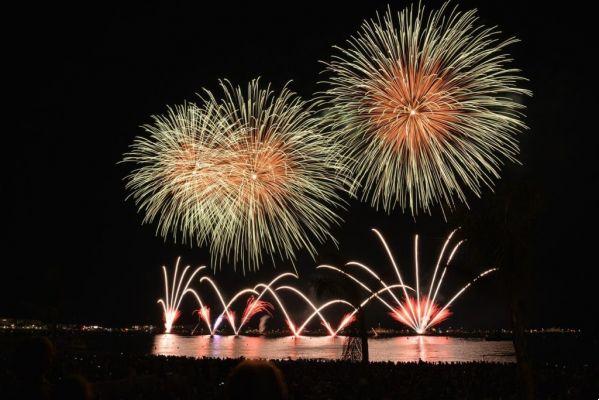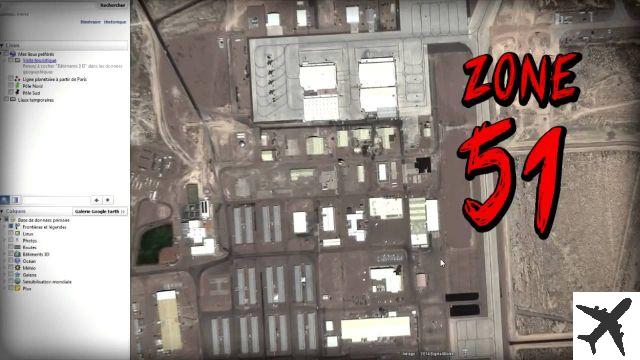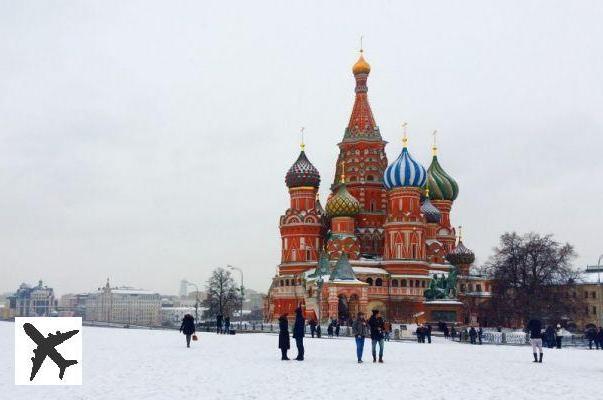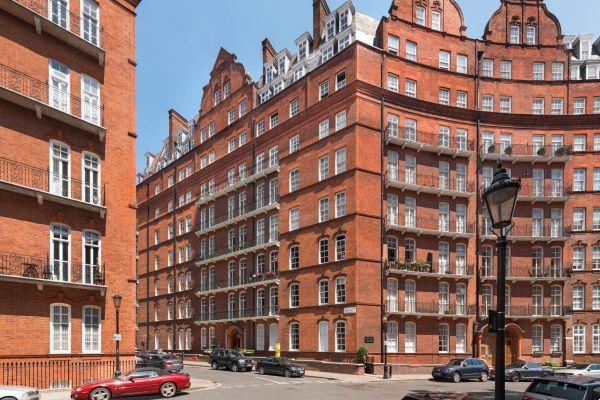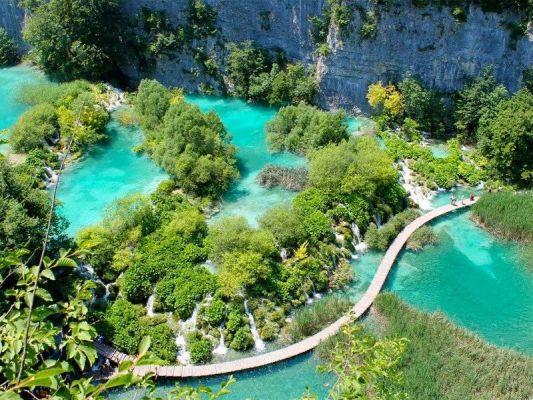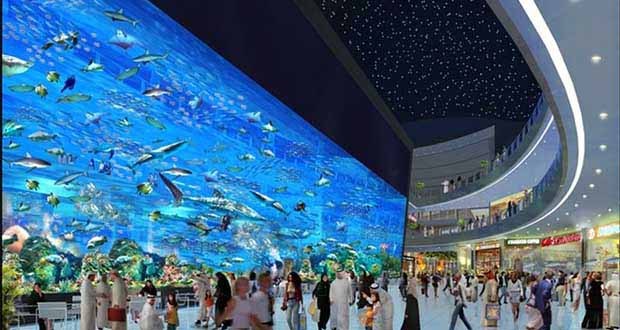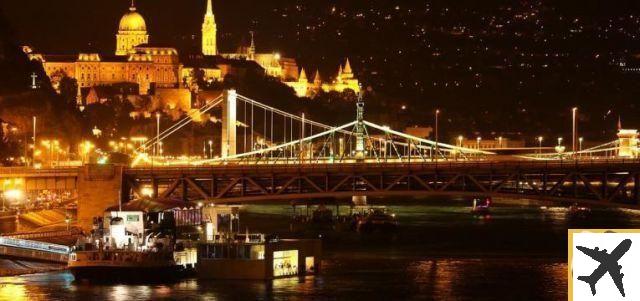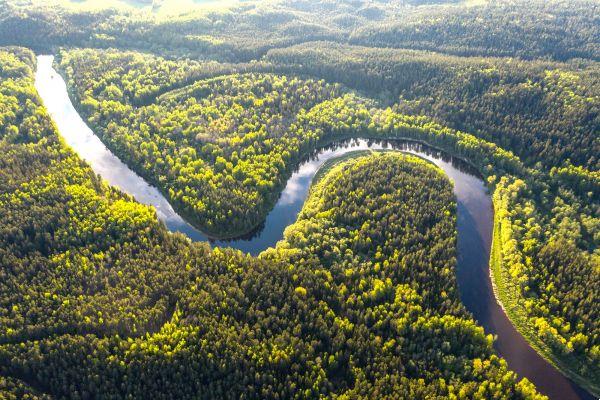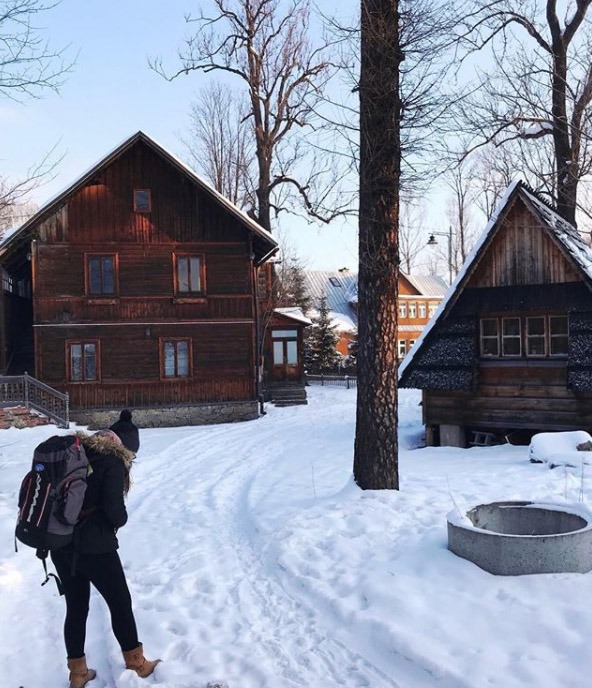Europe is undoubtedly the dream destination of many people, as the continent has a lot of history and breathtaking scenery, like those we see in movies, like “Under the Tuscan Sun”, “Letters to Juliet” and “Eat, Pray, Love”.
That's why, most of the time, the most popular seasons for travelers are spring or summer, high season on the mainland. They go in search of a mild climate and natural landscapes for a cinematic experience (like that of the character Frances, in a sunny Tuscan village).
But what many people don't know is that winter in Europe also has its charm, being able to be magical even with a rigorous cold. Which for us Brazilians has its uniqueness.
In this context, so you don't miss the chance to see Europe from another perspective, I've separated 10 European countries that have super cool winter destinations. In addition, you can already get an idea of what to pack with tips on how to avoid getting stuck in the cold there.
Before boarding, purchase Travel Insurance, which is mandatory in Europe. Using the Seguros Promo search engine you will find the best prices.
10 countries to visit in the European winter:- When is winter in Europe?
- What to pack for winter in Europe?
- winter destinations in europe
- Germany
- Bosnia and Herzegovina
- Eslovenia
- Estonia
- Finland
- Italy
- Iceland
- Polônia
- Russia
- Switzerland
When is winter in Europe?
Positioned in the northern hemisphere, Europe has its seasons well defined and inverted from those of Brazil, located in the southern hemisphere. I.e, while Brazilians enjoy the summer, Europeans are wrapped up.
To be more exact, winter in Europe lasts from day December 21st to March 20th. However, countries further north of the continent are already starting to prepare for the arrival of winter in autumn, as it is common for the sensations of cold to increase every day.
Generally, this season of the year is characterized by shorter and darker days (which results in time adjustments for visiting some tourist attractions), snow and strong, icy winds.
It is important to highlight that you will have more guarantee of see a lot of snow (a lot, really a lot) in countries further north, like Finland and Iceland, for example. Or, in places with altitudes high, like the Alps.
In general, in winter, the prices are cheaper and attractions are less crowded for being a period of low season. Despite this, some cities in the month of December can go against this reality, since the end of year festivities tend to attract many tourists, mainly in search of the famous Christmas markets.
What to pack for winter in Europe?
Being prepared for the winter in Europe (especially for countries further north) is a very important step in planning your trip, as we are not used to extreme cold in Brazil.
But do not worry! With the appropriate clothes and accessories for low temperatures, it is possible to enjoy the trip without many setbacks. Furthermore, indoor spaces always have heaters, so it will be an eternal put on a coat, take off a coat.
From Brazil, I recommend taking only the basics, such as: scarf, caps, hats, thicker wool socks, tights and wool blouses, as they are the easiest products to find around here. After all, you can buy or rent the most suitable cold clothes for the European winter in stores at your destination, mainly where the cold reaches many negative degrees.
It is good to know that some regions snow and have more rigorous temperatures, while in others, the cold can be milder. That's why it's good to organize your suitcase according to the place you travel.
First, it is ideal if dress in layers. Therefore, bet on thermal shirts and pants (which serve to maintain body heat) as the first and indispensable layer of clothing.
It is recommended to wear long sleeved blouses, sweatshirts or high neck wool or cashmere sweaters over thermal shirts. In the case of pants, jeans and sweatshirts are cool if the cold isn't too intense. Otherwise, prioritize polyamide, acrylic or lined ones (like those used to practice sports like skiing).
Already third layer serves to protect you from the wind, so wear woolen or polyester coats and windbreaker jackets in case of rain, but all that are, preferably, waterproof. Woolen or thermal gloves, lined knit hats if the coat does not have a hood, ear muffs and scarves are also items that help a lot to protect yourself.
De shoe, opt for proper winter boots, which have non-slip soles (or suitable for snow) and are insulating and waterproof. In addition, of course, to high thermal insulation socks. If the temperature is milder and without snow, it's super cool to wear very closed sneakers and higher socks.
Personally, I really like to buy these clothes in thrift stores in Europe and also in department stores like H&M, Primark, Mango…
winter destinations in europe
1.Alemanha

Winter is one of the best times to visit Germany, mainly because of the end of year festivities, as the Christmas markets spread across the country are super well prepared, with decorations and first-rate products, and give an extra charm to The cities.
I recommend the Christmas markets in Constance, voted one of the best in Europe, Cologne and Frankfurt. In fact, in any city in Germany, big or small, you will find markets at the whim.
In addition, it's nice to visit the most touristic cities, like Berlin, and see the attractions from a different point of view, with the spots covered in snow. The capital guarantees a lot of art, culture and history, and if you want to innovate, there are also many alternative tourist spots there.
Munich, capital of the Bavarian region (known for the Bavarian Alps), is also a very famous destination in the German winter, as it can serve as a starting point to visit small mountain towns and points such as Neuschwanstein Castle, which looks like something out of a movie .
2.Bósnia e Herzegovina

Bosnia and Herzegovina is a relatively inexpensive destination when compared to other European countries, even more so during winter, when it is low season.
Bosnia has a very long history, marked by conflicts – as does the entire Balkan region. No wonder you will find many tours and cultural attractions in Sarajevo, the capital.
Sarajevo is a must see in the country, with the Baščaršija (shopping area in the center, ideal for having a Bosnian coffee to warm up from the cold), the climb to the Yellow Fortress (to see the roofs of the houses colored with snow when you reach the top of the hill), the Tunnel of Hope and much more.
Incidentally, the capital was also the host of the 1984 Winter Olympics. Nowadays, even with the Olympic Bobsleigh and Luge track abandoned, it is still possible to visit it in Montanha Trebevic.
Hiking in the region's mountains, such as Jahorina (which has a ski resort) and vlasic, is an outdoor program that pays off a lot! Seeing the extension of these mountains with their all white pines, dominated by snow, is spectacular!
Extend the itinerary to visit Konjic, Blagaj, Pocitelj e Mostar it is also a good idea, as the beautiful cities are close to Sarajevo. Mostar is the most touristic among them, with the Stari Most bridge and the old town, full of little shops.
3.Eslovênia
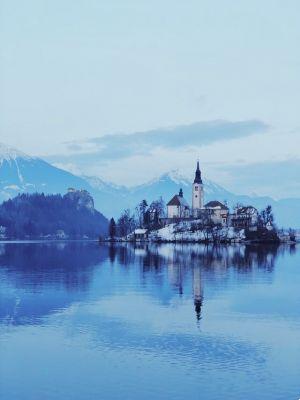
Slovenia has beautiful cities and exotic landscapes that are worth visiting, even though it is not among the best known destinations in Europe.
Ljubljana is the country's capital and has many interesting tourist attractions. The Ljubljana Castle and Cathedral are hallmarks of the city, as are the bustling Prešeren Square and the bridges that span the Ljubljanica River, which is often frozen No. winter.
I also recommend doing a round trip to Bled leaving the capital. So you can get to know the spectacular lake of the city, which has an island that houses the Church of the Assumption (postcard of Slovenia) and a castle on top of the mountain.
I visited Bled in spring, but the view of the sights (especially the mountain range with the pine trees) and the Alps in the background of the city must be even more special with the snow.
For a more winter program, consider visiting the mountain Bird, where there is one of the largest ski resorts in Slovenia, located in the Bohinj valley. Surrounded by the Julian Alps, this place holds unique natural beauties, such as the largest permanent lake of glacial origin in the country!
4.Estônia

First, it's good to know that Estonia, one of the three Baltic countries, has a harsh winter.
However, even with the cold, the landscapes do not disappoint. They actually make it even prettier! Tallinn, for example, has one of the best-preserved historic centers in Europe.
The city represents the medieval period very well, with walls, towers and bastions. At the end of the year, the Christmas market is a must for those who enjoy this historic atmosphere.
Furthermore, Tallinn is very close to Helsinki, Finland. Thus, if you have the opportunity, it is interesting to do a day trip and include both countries in the same winter itinerary.
Estonia's winter capital couldn't be left out either: Otepaa. This small town is the ideal destination for those looking to practice sports such as skiing and snowboarding.
5.Finlândia
Finland is one of the coldest countries in Europe, unfortunately still little explored when it comes to tourism.
The capital, Helsinki, is the most famous city there and its most visited attractions are Suomenlinna Fortress, Helsinki Cathedral and the National Museum of Finland (among several other museums).
In mid-December, a Christmas market takes place at Praça do Senado, downtown. The structure is charming, with the colorful wooden houses. Drinking a good wine there is a great program to alleviate the cold, which is no joke at this time of year.
But, in order to get away from the obvious route, another destination in the country that may be more typical for your winter trip is the laponia, a region that also extends into territories of neighboring countries.
This region is known for being the Santa's home. And, when it seems that there is no way to improve, this magical sensation increases even more when discovering that it still gives rise to two natural phenomena: the aurora boreal and the midnight sun (which occurs only in summer).
In the capital of Finnish Lapland, called Rovaniemi, you can go in search of the Northern Lights (one of the best places in Finland to see the phenomenon), ride a sleigh, ride a snowmobile and visit the village of the most beloved old man in the world – that is, Christmas is a very important date for city dwellers and a time of high season.
6.Italy
Everyone knows that Italy is one of the most desired destinations in Europe, but what many don't know is that you can also enjoy a lot of this country in winter (which has a milder cold).
Most of the time, we associate Italy with sunshine and gelato. Not to mention that the first points that come to mind are the most popular, like the canals of Venice.
However, the country is also beautiful in winter, and has even more beautiful attractions that are worth checking out at this time of year. I recommend getting to know the Italian Alps, further north, which tend to be off the radar of most tourists.
This region of the Alps, which receives the name of Dolomites, is, in itself, breathtaking. But in winter, when the lakes are frozen and the mountains covered with snow, the scenery becomes even more amazing.
There you can explore Bolzano, Trento, Udine and Pordenone (the municipalities in the vicinity), go hiking (choosing the one that best suits your level of difficulty) to admire the unique landscapes, pass by lookouts and practice many sports, such as skiing.
7.Iceland
Iceland, as the English translation itself conveys, is the land of ice. In addition to being the land of ice, it is also, curiously, considered the land of fire, due to the many active volcanoes there.
Despite being close to the Arctic circle, the Nordic island does not have temperatures as low and rigorous as those of Russia, for example. But Thermal sensation it may be smaller, motivated by the recurring rains and snowfalls.
It is also worth mentioning that, like Finland, Iceland is also known for being the stage for one of the most incredible phenomena to watch: the Northern Lights.
In the Icelandic winter months, because the nights are longer, the probability of seeing the beautiful northern lights (preferably away from light pollution) dancing and coloring the sky is even greater. Many tourists seek out their luck on excursions from Reykjavik, the capital.
Ice cave tours and glacier hikes are other unmissable attractions that await you in Iceland.
the country is the only one on the list that I haven't met yet, but I hope it's for now, because it's a dream!
And if you want to know more about Iceland, from those who toured the whole country, I recommend that you check out Iceland tips from the people of Flymaniacs.
8.Polônia
Poland is a super interesting winter destination. This is visible, for example, when walking through the alleys of the medieval center of Gdansk, a super beautiful and different city in the country.
The city of Krakow it is also super known for its cultural tours and for being home to several well-known tourist attractions, such as Wawel Castle and the Historical Museum at Oskar Schindler's Factory.
For more typical winter attractions, I advise you to visit Zakopane, at the base of the Tatra Mountains, located just a few hours from Krakow.
Zakopane is very charming, in addition to being the ideal place to practice winter sports, like skiing. The view of the snow-capped mountains on a hike through the Tatra National Park, for example, is also worth the visit alone, as it is spectacular.
9.Rússia
At first glance, getting to know Russia in winter seems to be challenging, as the average temperature in some regions, such as Siberia (and even Moscow) can reach -40 degrees.
No wonder the country has one of the harshest winters in Europe and also one of the most beautiful, with forests and other unexplored natural beauties.
In Moscow and Saint Petersburg, Russia's most tourist cities, the cold is more tolerable, despite the temperature also reaching several degrees below zero.
In the Russian capital, Moscow, you can enjoy the winter weather at the Soviet Park VDNKh, which not only has rich cultural attractions important for the country's history, but also the largest skating rink in Europe.
In addition to the VDNKh track, one is also built on Red Square. This rink is great for skating and seeing famous spots like the Kremlin and St. Basil's Cathedral covered in snow. It is also nice to visit the end of year fairs to find typical souvenirs from the country.
in winter in Saint Petersburg it is possible to see the Neva River, the main one of the city, and its completely frozen channels. In addition, some attractions to warm up from the cold outside are the Hermitage Museum, the Winter Palace and the Cathedral of Spilled Blood.
10.Suíça
This list of winter destinations in Europe would not be complete without Switzerland! When one thinks of winter in the country, the Alps are the first point that comes to mind for tourists in search of cinematic scenery.
Among some of the most visited cities in the Alpine region at this time of year are: Zermatt, Interlaken, Lucerne and St. Moritz. At first, Zermatt was mainly known for the Matterhorn mountain.
In the city of Interlaken you can do several trail rides, which is an amazing experience as the city is between lakes (as the name already suggests). Close to the Interlaken region is Jungfraujoch (a railway station that is a UNESCO World Heritage Site), considered the Top of Europe. This station is located on the Jungfrau mountain.
Yes, Lucerne guarantees the typical postcard sceneries, with the charming little wooden houses covered in snow. Close to the city is Mount Titlis, one of the most famous and visited mountains in Switzerland.
The city of St. Moritz it has already hosted the Winter Olympics and has one of the best infrastructures for winter sports.
Do you want to get away from the Swiss tourist trail and visit an unusual and beautiful winter destination in the country? Search about the city of I poschiavo, which is just beyond St. Moritz. In addition to being beautiful, the city is one of the last in Switzerland where the Romansh language is still spoken.
Furthermore, as a starting point, I suggest starting the route through the Swiss Alps from the city of Zurich, after taking advantage of the best tourist spots there, such as the Uetliberg mountain. At the end of the year, I recommend going to the Christmas market Wiehnachtsdorf Markt, which is located at Sechseläutenplatz, on the side of Lake Zurich.
The market has several leisure areas and the best of local and international cuisine.




